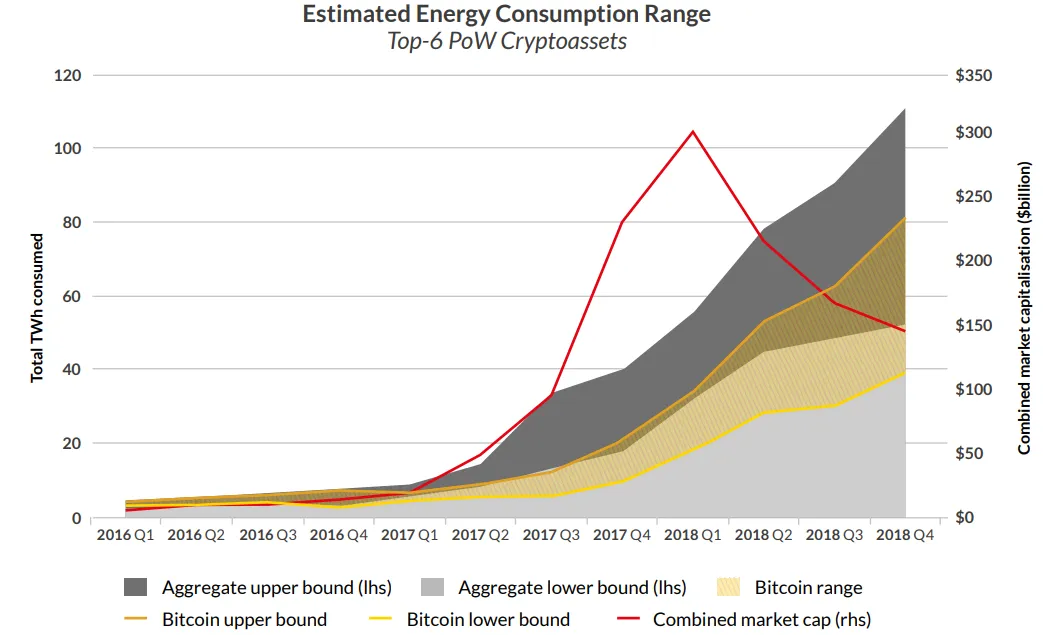Using eco-friendly cryptocurrencies can soon become the main priority for individuals and companies, in an effort to contain climate change.
The issue of lessening our global carbon footprint became front story news when Elon Musk declared it will no longer accept bitcoin payments for Tesla, in May 2021. He argued that the cryptocurrency’s mining process is increasing the use of fossil fuels. And that has a huge negative environmental impact.
Table of contents
- How sustainable is crypto?
- Proof-of-work consensus
- Proof-of-stake consensus
- 1. Nano (NANO)
- Why is nano a green cryptocurrency?
- 2. Cardano (ADA)
- Why is cardano a green cryptocurrency?
- 3. Stellar (XLM)
- Why is stellar a green cryptocurrency?
- 4. IOTA (MIOTA)
- Why is IOTA a green cryptocurrency?
- 5. EOS (EOS)
- Why is EOS a green cryptocurrency?
- 6. Ripple (XRP)
- Why is ripple a green cryptocurrency?
- 7. Algorand (ALGO)
- Why is algorand a green cryptocurrency?
- 8. SolarCoin (SLR)
- Why is solarcoin a green cryptocurrency?
- 9. Ethereum 2.0 (ETH)
- How to find eco-friendly cryptocurrencies?
- Blockchain tech is moving towards eco-friendly solutions
How sustainable is crypto?
How sustainable is digital currency? The short answer is: it depends.
When it comes to analyzing the most energy-efficient cryptocurrency, we have to inspect the process of creating and sustaining each blockchain. Most of these cryptocurrencies are produced through mining.
The Bitcoin network, for instance, uses the proof-of-work consensus.
/Related
MORE ARTICLESBest Christmas Crypto Promotions in 2022
Top 10 Telegram Channels for Crypto Signals in 2022
9 Best Crypto Exchanges for Beginners
Copy Trading: A Definitive Guide for Beginners (2022)
What Is the Crypto Fear and Greed Index?
Top 7 Crypto Debit Cards in Europe
How To Make Money With Bitcoin in 2022: 9 Proven Methods
Web3 Jobs: How to Get a Job in Crypto Sector
Who Owns the Most Bitcoin in 2022?
Proof-of-work consensus
PoW helps verify that a blockchain (or digital ledger of transactions) has been assembled correctly.
A network of computers solves a complicated mathematical problem based on a cryptographic hash algorithm in a finite amount of time. If a solution is found, which is called proof-of-work, then the verified transaction is added to the blockchain. Miners receive rewards when they help generate these solutions.
The issue with the proof-of-work consensus is the power consumption.
As the new blocks include new and more complicated mathematical problems, the miners require more computational power, hence more electricity, to be able to solve them and claim the reward, in the given cryptocurrency.
If the price on cryptocurrency exchange sank too much, it may not be feasible for miners to work on that network, since the electricity bill is more than the value of the crypto received.
 PoW power consumption: The Cambridge Centre for Alternative Finance
PoW power consumption: The Cambridge Centre for Alternative Finance
Cambridge Centre for Alternative Finance, an interdisciplinary research institute based at the University of Cambridge Judge Business School, found that Bitcoin uses around 82 terawatts-hour per year. That is more than Belgium or Chile use.
Proof-of-stake consensus
PoS is a consensus mechanism that randomly assigns the node that will mine or validate block transactions according to how many coins that node holds. While there are numerous flaws associated with PoS, the fact that it is less resource-intensive and doesn’t require mining makes it a more environmentally friendly option.
Here’s a comparison between some of the most sustainable cryptocurrencies and bitcoin, regarding energy consumption for one transaction.
| Cryptocurrency | Transaction cost in Kilowatt hour (KWh) |
| Nano | 0.000112 |
| Cardano | 0.5479 |
| Stellar | 0.00003 |
| IOTA | 0.00011 |
| EOS | 0.00122923 |
| Ripple | 0.0079 |
| Algorand | 0.000008 |
| Ethereum | 62.56 |
| Bitcoin | 1,544 |
But there are some cryptocurrencies that are more energy-efficient than bitcoin. In no particular order, here are the top 9 most eco-friendly cryptocurrencies we could find.
1. Nano (NANO)

Nano is a sustainable cryptocurrency, which is free to use because it doesn’t rely on mining. This scalable and low-latency crypto relies on a voting system to achieve consensus. That’s why it is an energy-efficient cryptocurrency, having one of the lowest carbon footprints.
Why is nano a green cryptocurrency?
Nano runs the Open Representative Voting (ORV) consensus mechanism. In this system, the users vote on each transaction.
The Nano system relies on a block-lattice ledger design, which processes asynchronous transactions. Each node secures independently each transaction, which is irreversible and is achieved in less than 1 second.
By using this system, only account owners can sign blocks on their account chains. This also protects the whole ecosystem from malicious actors.
2. Cardano (ADA)

Cardano (ADA) was the first peer-reviewed blockchain, and it functions both as a currency and as a digital contract and DApps medium.
The Cardano network can process 1000 transactions per second, compared to 7 transactions on the Bitcoin blockchain. It was created by Ethereum’s co-founder, Charles Hoskinson, and many believe it has the potential to compete with the Ethereum network.
Why is cardano a green cryptocurrency?
Cardano uses a proof-of-stake consensus, called Ouroboros. This was the first peer-review protocol for blockchain and this makes ADA a sustainable cryptocurrency and one of the most popular ones too.
The foundation for the Cardano network is setting it to scale at global requirements without sacrificing security, offering a transparent payment system, in an energy-efficient manner.
3. Stellar (XLM)

Stellar is a network established in 2014 as a fork from the Ripple network, and it operates as an energy-efficient cryptocurrency. Only a selected number of distributed nodes are required to confirm each transaction.
Moreover, its goal is to seamlessly create a bridge between the traditional banking system and digital currencies. The technology is already in use by world-famous companies (IBM, Deloitte) and even governments (Nigeria, France, The Philippines, India, Ukraine).
Why is stellar a green cryptocurrency?
XLM is a cost-efficient cryptocurrency as it can facilitate financial trades efficiently. It has a lower carbon footprint because it does not rely on mining. Users of the network can create tokens of their own for sustainable initiatives.
The consensus protocol operating on the Stellar network, the SCP, is using a set of trustworthy nodes to validate network transactions. This makes the process much shorter and efficient than the proof-of-work and proof-of-stake algorithm. And this keeps the energy consumption at a minimum level.
4. IOTA (MIOTA)

IOTA is a more stable cryptocurrency, and it is not the kind of volatile crypto that some investors are after. However, the network uses a system that conveys an overall low level of energy consumption, thus making IOTA an eco-friendly cryptocurrency.
Why is IOTA a green cryptocurrency?
IOTA (MIOTA) does rely on the proof-of-work mechanism to achieve consensus, but it uses the Fast Probabilistic Consensus, which has minimal energy consumption. In fact, the energy consumption per transaction for Iota was calculated by a PhD student to be just 0.11 watt-hours.
That energy consumption is much lower than what giant financial networks use today, and it is estimated it could be reduced. IOTA’s network energy consumption can function on a reduced energy requirement of up to 95% of what it is currently using. But future updates are still in development.
5. EOS (EOS)

EOS is more than a cryptocurrency, it is a decentralized operating system based on blockchain. Developers can use it to create safe, transparent, and compliant dApps and smart contracts. All nodes on the EOS network must obey the regulations set by the community. The platform was launched by Daniel Larimer, the founder of Bitshares and Steem.
Why is EOS a green cryptocurrency?
EOS is one of the main competitors for Ethereum. It aims to handle a million transactions per second. The network uses the Delegated Proof of Stake (DPoS) consensus mechanism. This allows it to create a new block every 0.5 seconds, and it is a technology-based democracy, as it uses systems such as voting and elections to keep the blockchain secure and validate the next block.
This alternative to the classic PoS is by design eco-friendly and energy-efficient. It is a popular choice for many projects, including Tezos.
6. Ripple (XRP)

Ripple is a peer-to-peer decentralized network that allows the transfer of money and facilitates seamless conversions between different currencies around the world. XRP is the native currency of the network, and it serves as an intermediate medium of exchange. Financial institutions are currently using the Ripple network for fast money transfers.
Why is ripple a green cryptocurrency?
XRP is pre-mined, and it uses the Ripple Protocol Consensus Algorithm (RPCA). Simply put, a transaction must be approved by at least 80% of the network’s validators before it can be added to the blockchain. This makes XRP an eco-friendly cryptocurrency. It functions on an efficient and secure network that allows low-fee transactions to occur at great speed.
7. Algorand (ALGO)

Algorand is a blockchain platform that uses proof-of-stake, which makes it scalable and secure, and it supports smart contracts. The pure permissionless PoS is accessible and uses far less energy than other cryptocurrencies.
Why is algorand a green cryptocurrency?
Algorand uses the proof-of-stake algorithm to validate blocks and does not involve mining, as it tries to lead the way to a sustainable blockchain network system. The project had pleaded to become the first carbon-neutral blockchain when it signed a partnership with ClimateTrade.
8. SolarCoin (SLR)

SolarCoin is a decentralized cryptocurrency that aims to mobilize real-world environmental activities. The crypto was launched in 2014 and one token is generated for every megawatt-hour generated using solar technology.
Why is solarcoin a green cryptocurrency?
SolarCoin uses the proof-of-stake consensus algorithm and as the network of users grows, it is supposed to become even more efficient.
Users receive 1 SolarCoin for each Megawatt hour generated by their solar technology. At the moment, the system relies on users uploading the documentation, but IoT will soon be used to make automatic updates from the solar system.
By incentivizing the population to use and produce solar energy, the entire planet benefits. The SolarCoin system is not only energy-efficient, but it becomes closer to having zero carbon footprint as the solar energy generated by those supporting the project is more than what the network needs.
9. Ethereum 2.0 (ETH)

Ethereum is the second most popular blockchain platform after Bitcoin, and its cryptocurrency is called Ether (ETH). Users can use the public ledger to create and use applications and use ETH as a means of payment.
The Ethereum network uses the proof-of-stake consensus mechanism, which is bloating the network, creating prohibiting network fees for ETH transactions.
Because the network expanded so much in the last years, its founder, Vitalik Buterin, decided to replace the proof-for-work with a proof-of-stake mechanism.
Ethereum 2.0 is aiming to be a more scalable, secure, and sustainable blockchain. The upgrade is taking place over the year of 2021, and hopefully, we will be able to say that Ethereum is an eco-friendly cryptocurrency by 2022.
How to find eco-friendly cryptocurrencies?
Most cryptocurrencies we use today still rely on the original model set by the original crypto, Bitcoin. That is the model in which new tokens are created through mining. This is most known as the proof-of-work consensus mechanism, and it’s a very energy-intensive algorithm.
Are cryptocurrencies eco-friendly? It depends. They could be, but you need to pay a closer look at how their blockchain is built.
An eco-friendly cryptocurrency should use alternative consensus mechanisms, such as the proof-of-stake algorithm to maintain the integrity of the blockchain while being energy efficient and reducing the carbon footprint to a minimum.
The energy requirements of a cryptocurrency come down to the algorithm used by the blockchain network it is hosted.
Another component of a sustainable cryptocurrency is the market dynamic. Even in the case of bitcoin, the crypto with the largest carbon footprint, when the price crashes, so does the energy consumption. Miners are no longer incentivized and some will even turn off their computers and stop mining when the process is no longer profitable for them.
Blockchain tech is moving towards eco-friendly solutions
The good news is that the blockchain industry is getting more interested in creating a sustainable and eco-friendly cryptocurrencies with every year that passes. The sustainability and scalability features are becoming core criteria for existing and new crypto. We will surely see more sustainable cryptocurrencies in the future and part of large projects and even used as payment means for real-life goods.





